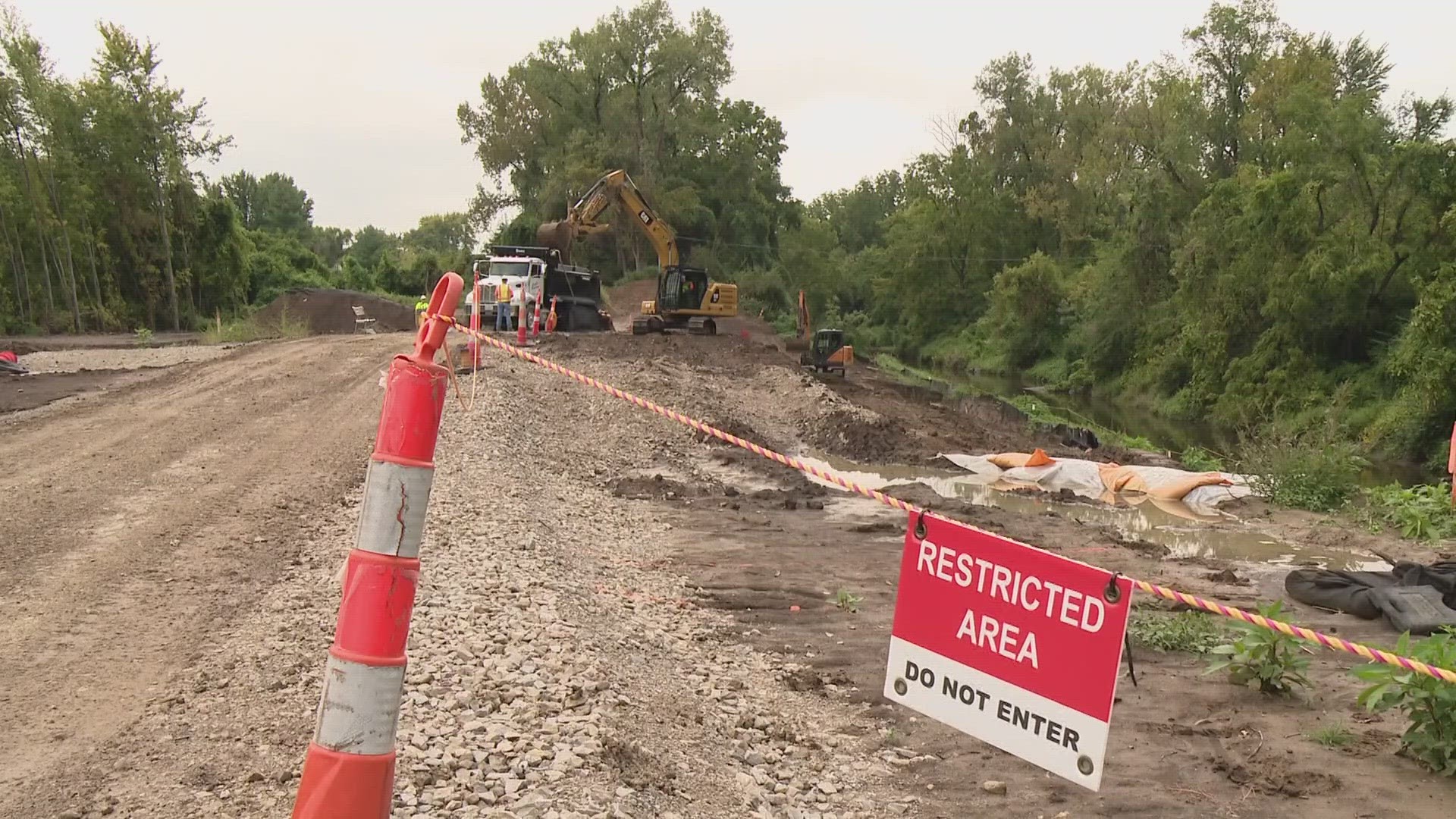ST. LOUIS COUNTY, Mo. — "Every challenge is an opportunity to grow."
That was the message in front of Jana Elementary for months following a tumultuous time.
Now, the sign is removed altogether.
Jana PTA President Ashley Bernaugh reacted to the removal Friday afternoon, after seeing the sign gone for the first time.
"I think it's a big sign that this is a big change for this community. Potentially Jana is gone, we don't know, but the proof is in the pudding," Bernaugh said.
Earlier this year, Hazelwood School District announced Jana Elementary was not expected to reopen, following months of conflicting reports of radioactive waste in and around the school.
The U.S. Army Corps of Engineers, also known as USACE, has confirmed there is low-level radioactive contamination on the banks of Coldwater Creek, which is on the edge of Jana's property boundary.
Coldwater Creek was contaminated by radioactive material from the first atomic bomb.
Under the Formerly Utilized Sites Remediation Program (FUSRAP), the U.S. Army Corps of Engineers is responsible for cleaning up sites with contamination associated with historic activities performed as part of the nation’s early atomic energy program.
The work performed on the Jana Elementary property is part of USACE’s ongoing remediation efforts along Coldwater Creek under FUSRAP.
As of two weeks ago, a spokesperson with the USACE said it removed 301 truckloads of contaminated soil, which is 2,510 bank cubic yards excavated.
A cubic yard of material can be spread to cover 100 square feet (a 10 by 10-foot area) at three inches of depth.
FUSRAP then remediates the contaminated soil by loading it onto trucks taken to the St. Louis Airport Site, known as SLAPS.
Then it's loaded onto railcars and shipped to US Ecology in Idaho, an approved disposal facility.
Phillip Moser, Chief of FUSRAP's Environmental Branch at USACE St. Louis District said, the majority of the contamination is several feet below ground surface.
"It’s pretty standard as far as the areas of remediation that we have been encountering in north St. Louis County sites, especially around Coldwater Creek, where we find spotty areas of contamination. You will find that much area to excavate," Moser noted. "When we go in and do remediation and remove the contaminated soil, qualified technicians will do survey and evaluation and will do a completion document."
Moser said while crews aren't finished yet, it is estimated that the extent of contamination is under 6,800 cubic yards along the creek bank.
Just last week, United States Sen. Josh Hawley also questioned the Department of Energy, demanding more action.
"This is 70 years that there has been radioactive contamination in water and soil all over the St. Louis region. It's the same old story over and over and over," Hawley said.
Bernaugh doesn't want to repeat history either. She only wants the region to grow and get better from this challenge.
"I've tried to do things to create a written legacy to help document what happened here at Jana so we don't have to repeat this legacy anywhere else in the nation," she said.
This specific project on Jana Elementary's property is expected to be finished by the fall of this year.
As far as the rest of the contaminated areas along Coldwater Creek, a rough projection for completion is 2038.
"The process does take time," Moser said. "You’ll be finding a crew from now until the end of remediation."
On Sept. 20, Hawley will be holding a rally for justice outside the Capitol for victims of nuclear waste in the St. Louis area with constituents.
This is after the Senate adoption of Hawley’s legislation to compensate victims of government-caused nuclear contamination in the greater St. Louis area.

